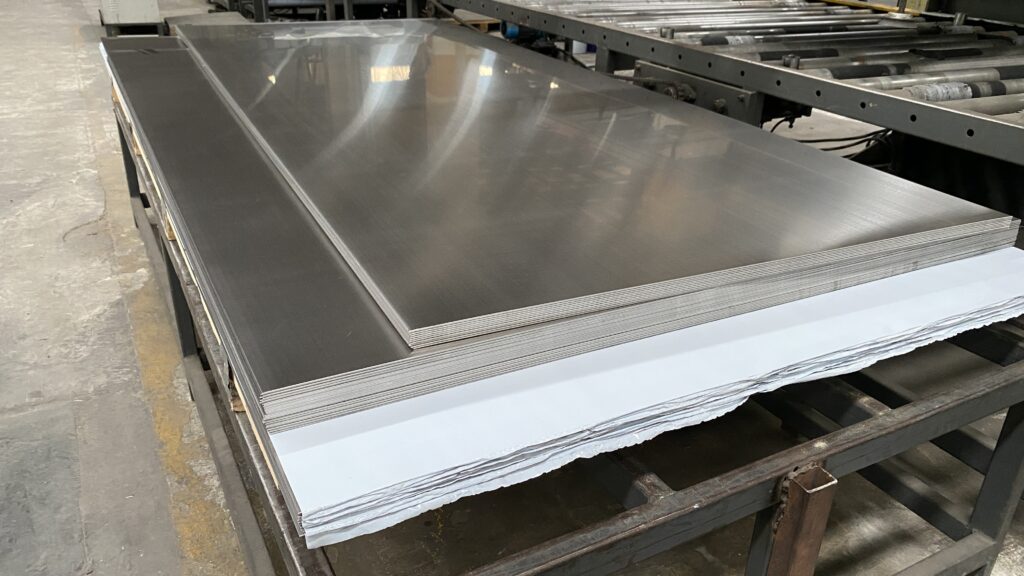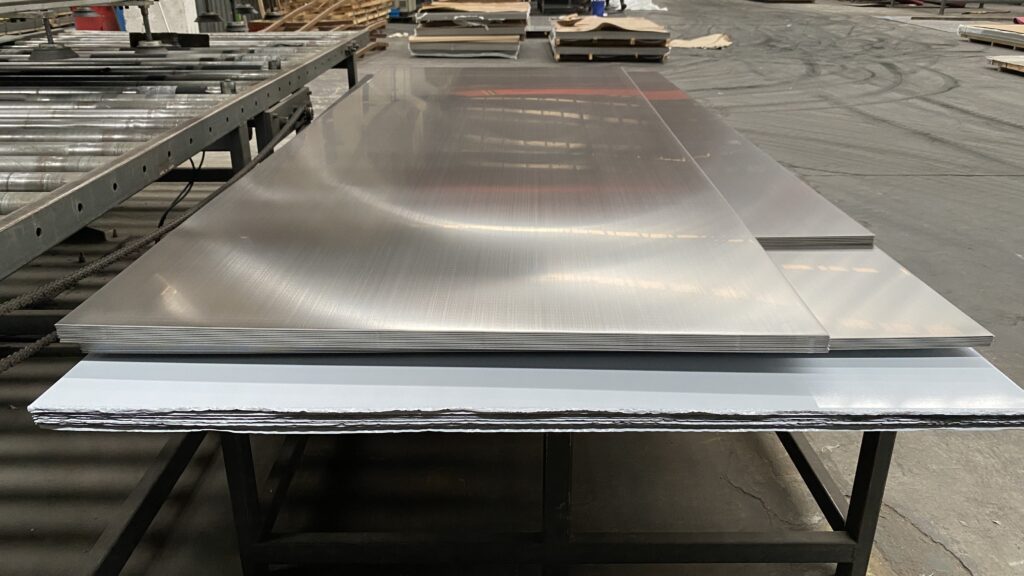Welcome to My Blog!
Before we dive into the content, I’d love for you to join me on my social media platforms where I share more insights, engage with the community, and post updates. Here’s how you can connect with me:
Facebook:https://www.facebook.com/profile.php?id=100087990137347
LinkedIn:https://www.linkedin.com/company/89825762/admin/dashboard/
YouTube:www.youtube.com/@carbonsteelsupply-kj9lw
TikTok:www.tiktok.com/@carbonsteelsupply
Now, let’s get started on our journey together. I hope you find the content here insightful, engaging, and valuable.

Introduction
When it comes to selecting materials for industrial and commercial projects, 316 stainless steel tubing stands out as one of the most versatile and durable options available. Known for its superior corrosion resistance, high-temperature endurance, and robust structural integrity, 316 stainless steel tubing is often the preferred choice in industries ranging from chemical processing and marine applications to food and pharmaceutical production.
This blog will explore the top reasons why you should choose 316 stainless steel tubing for your project. We will delve into its benefits, applications, and practical advantages, providing you with comprehensive insight into why this material is a leading choice across industries.
1. What is 316 Stainless Steel Tubing?
316 stainless steel tubing is an alloy made primarily of iron, carbon, chromium, nickel, and molybdenum. The molybdenum content in 316 stainless steel tubing gives it enhanced resistance to corrosion, especially against chlorides and other industrial chemicals, compared to 304 stainless steel.
Key Components of 316 Stainless Steel:
| Component | Percentage (%) |
|---|---|
| Chromium | 16-18 |
| Nickel | 10-14 |
| Molybdenum | 2-3 |
| Carbon | ≤ 0.08 |
| Manganese | ≤ 2.00 |
| Silicon | ≤ 1.00 |
These elements work together to give 316 stainless steel tubing its remarkable performance under demanding conditions, making it a superior option for many industries.
2. Corrosion Resistance: Why It’s Essential
One of the most compelling reasons to choose 316 stainless steel tubing is its exceptional corrosion resistance. The presence of molybdenum enhances its ability to withstand harsh chemicals, making it ideal for environments where exposure to corrosive elements, such as saltwater, chlorine, or acidic chemicals, is frequent.
Industries That Benefit from Corrosion Resistance:
- Marine: Resists saltwater corrosion, making it perfect for ships, offshore platforms, and marine equipment.
- Chemical Processing: Withstands harsh chemicals and acids, such as sulfuric and hydrochloric acid.
- Pharmaceutical: Provides a non-reactive, sterile environment for drug production and processing.
316 stainless steel tubing is also highly resistant to pitting, crevice corrosion, and stress corrosion cracking, especially in environments containing chlorides.
3. Durability and Strength: Built for Tough Environments
When your project requires a material that can withstand high stress, 316 stainless steel tubing is the best choice. Its high tensile strength and toughness allow it to endure heavy loads and pressure without deforming or weakening.
Benefits of Using 316 Stainless Steel Tubing in High-Stress Environments:
- Tensile Strength: With a tensile strength of around 579 MPa (84,000 psi), 316 stainless steel tubing can handle significant stress without breaking.
- High Impact Resistance: It resists impact damage and is less likely to fracture under sudden force.
- Temperature Resistance: It performs well in both high and low temperatures, making it ideal for heat exchangers, furnaces, and cryogenic applications.
The strength of 316 stainless steel tubing also means fewer repairs and replacements, reducing downtime and maintenance costs in industrial projects.
4. Heat Resistance: Perfect for High-Temperature Applications
316 stainless steel tubing performs exceptionally well in high-temperature environments, maintaining its structural integrity and resistance to scaling and oxidation. It can operate at temperatures as high as 870°C (1598°F) without compromising its performance.
Heat Resistance Table:
| Temperature (°C) | Properties Retained |
|---|---|
| 400°C | Maintains tensile strength |
| 500°C | Resists oxidation and scaling |
| 870°C | Performs well under stress |
This ability to withstand high temperatures makes 316 stainless steel tubing ideal for industries like petrochemical processing, power generation, and furnace components.
5. Hygienic and Non-Reactive: Ideal for Food and Pharmaceutical Use
For industries where cleanliness and non-reactivity are essential, 316 stainless steel tubing is the material of choice. Its non-reactive surface makes it safe for transporting sensitive materials such as food products, medicines, and chemicals, as it doesn’t leach any contaminants or affect the quality of the substances.
Why 316 Stainless Steel Tubing is Essential in Hygiene-Critical Applications:
- Food and Beverage: Safe for use in food processing plants, where it prevents contamination.
- Pharmaceutical: Non-reactive surface ensures sterility and prevents chemical interactions.
- Cleanroom Environments: Ideal for sterile environments where cleanliness is crucial.
The smooth, polished surface of 316 stainless steel tubing also makes it easy to clean, which is crucial in industries with strict hygiene standards, such as medical equipment manufacturing and food production.
6. Longevity and Low Maintenance
Although the upfront cost of 316 stainless steel tubing may be higher than some alternative materials, it is a cost-effective option in the long term due to its longevity and low maintenance requirements.
Long-Term Cost Benefits:
| Feature | Benefit |
|---|---|
| Corrosion resistance | Fewer repairs or replacements |
| Heat and pressure tolerance | Longer operational lifespan |
| Low maintenance | Reduces cleaning and upkeep |
316 stainless steel tubing is designed to last for decades, especially in environments where corrosion and chemical exposure are significant factors. Its low maintenance nature also means fewer interruptions for repairs, contributing to smoother, more cost-efficient operations.
7. Environmental Sustainability
As industries move toward more sustainable practices, choosing materials that minimize environmental impact has become increasingly important. 316 stainless steel tubing is 100% recyclable, reducing the need for new raw materials and minimizing waste.
Sustainable Features of 316 Stainless Steel Tubing:
- Recyclability: Stainless steel is one of the most recycled materials globally.
- Energy Efficiency: Manufacturing stainless steel uses relatively less energy compared to other materials like aluminum.
- Durability: Its long lifespan reduces the frequency of replacements, lowering overall material consumption.
By choosing 316 stainless steel tubing for your project, you are investing in a material that aligns with modern environmental sustainability goals.
Table: Key Features and Benefits of 316 Stainless Steel Tubing
| Feature | Benefit |
|---|---|
| Corrosion Resistance | Protects against harsh chemicals and saltwater |
| Heat Resistance | Performs well under high temperatures |
| Strength and Durability | Withstands high pressure and stress |
| Hygienic Properties | Suitable for food and pharmaceutical industries |
| Longevity | Lasts for decades with minimal maintenance |
| Environmental Sustainability | 100% recyclable and energy-efficient |
Conclusion
Choosing 316 stainless steel tubing for your project offers numerous advantages that make it a standout material across various industries. Its exceptional corrosion resistance, strength, heat tolerance, and hygienic properties make it suitable for even the most demanding environments. Additionally, the longevity and sustainability of 316 stainless steel tubing make it a cost-effective, eco-friendly choice for companies looking to invest in high-quality materials.
Whether you’re working in chemical processing, marine engineering, food production, or pharmaceutical manufacturing, 316 stainless steel tubing is a reliable solution that ensures performance, durability, and safety.

FAQ
1. What is the main difference between 304 and 316 stainless steel tubing?
The key difference is the addition of molybdenum in 316 stainless steel, which enhances its resistance to corrosion, particularly in environments with chloride exposure like seawater or industrial chemicals.
2. Can 316 stainless steel tubing be used in high-temperature environments?
Yes, 316 stainless steel tubing can withstand high temperatures of up to 870°C (1598°F), making it ideal for use in heat exchangers, furnaces, and other high-heat applications.
3. Is 316 stainless steel tubing food-safe?
Absolutely. 316 stainless steel tubing is non-reactive and easy to clean, making it an excellent choice for food and beverage industries, as well as pharmaceutical applications.
4. How long does 316 stainless steel tubing last?
With proper maintenance, 316 stainless steel tubing can last for decades due to its resistance to corrosion, high durability, and ability to withstand harsh environments.
5. Is 316 stainless steel tubing environmentally friendly?
Yes, 316 stainless steel tubing is fully recyclable, which makes it an environmentally responsible choice. Its long lifespan also reduces the need for frequent replacements, minimizing its overall environmental impact.
6. What industries commonly use 316 stainless steel tubing?
Industries such as chemical processing, marine engineering, pharmaceuticals, food and beverage, and construction frequently use 316 stainless steel tubing due to its versatility and durability.
7. Is 316 stainless steel tubing expensive?
While the initial cost of 316 stainless steel tubing may be higher compared to other materials, its long-term benefits in terms of durability, low maintenance, and longevity make it a cost-effective investment.
